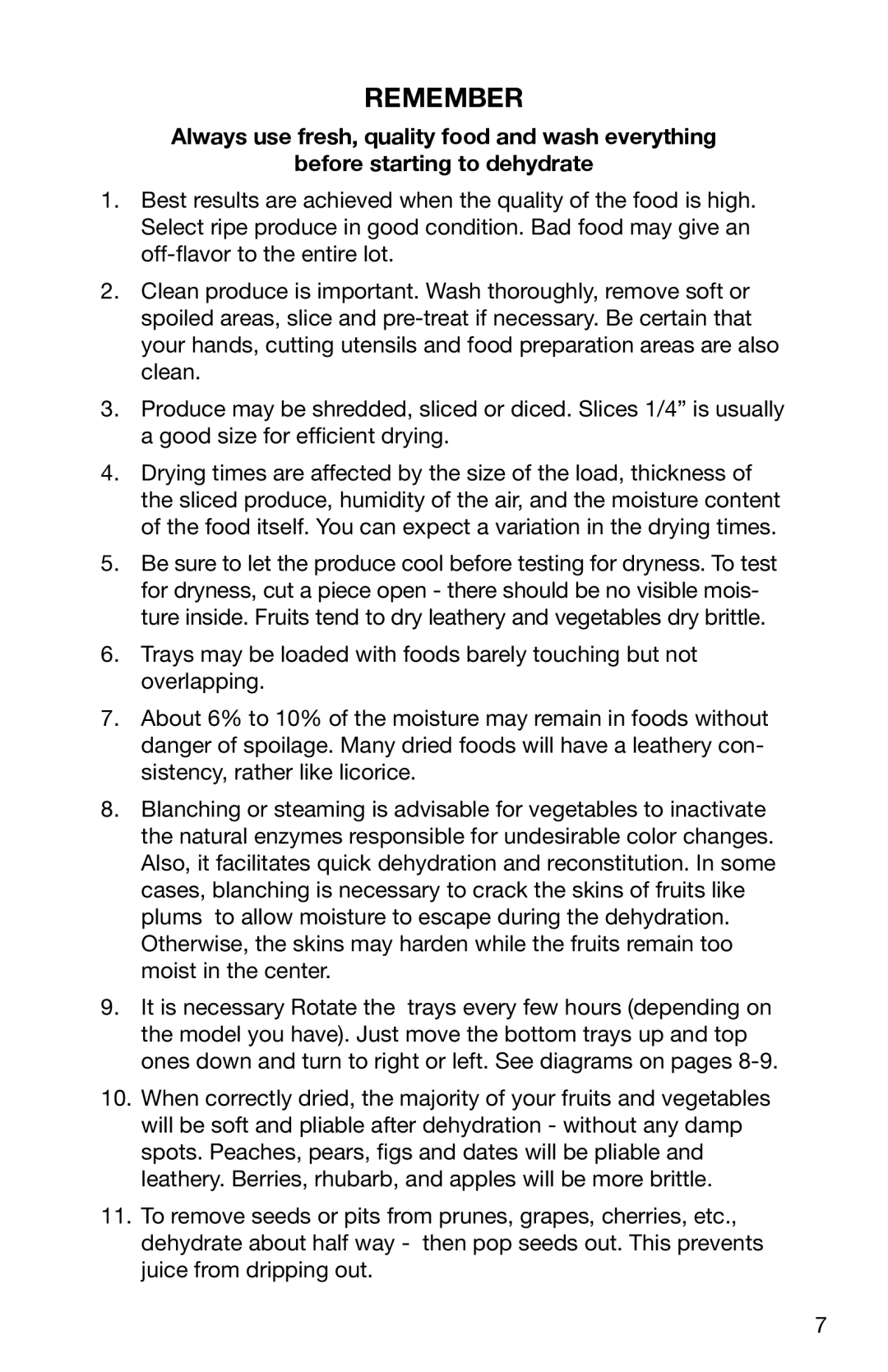Remember
Always use fresh, quality food and wash everything
before starting to dehydrate
1.Best results are achieved when the quality of the food is high. Select ripe produce in good condition. Bad food may give an
2.Clean produce is important. Wash thoroughly, remove soft or spoiled areas, slice and
3.Produce may be shredded, sliced or diced. Slices 1/4” is usually a good size for efficient drying.
4.Drying times are affected by the size of the load, thickness of the sliced produce, humidity of the air, and the moisture content of the food itself. You can expect a variation in the drying times.
5.Be sure to let the produce cool before testing for dryness. To test for dryness, cut a piece open - there should be no visible mois- ture inside. Fruits tend to dry leathery and vegetables dry brittle.
6.Trays may be loaded with foods barely touching but not overlapping.
7.About 6% to 10% of the moisture may remain in foods without danger of spoilage. Many dried foods will have a leathery con- sistency, rather like licorice.
8.Blanching or steaming is advisable for vegetables to inactivate the natural enzymes responsible for undesirable color changes. Also, it facilitates quick dehydration and reconstitution. In some cases, blanching is necessary to crack the skins of fruits like plums to allow moisture to escape during the dehydration. Otherwise, the skins may harden while the fruits remain too moist in the center.
9.It is necessary Rotate the trays every few hours (depending on the model you have). Just move the bottom trays up and top ones down and turn to right or left. See diagrams on pages
10.When correctly dried, the majority of your fruits and vegetables will be soft and pliable after dehydration - without any damp spots. Peaches, pears, figs and dates will be pliable and leathery. Berries, rhubarb, and apples will be more brittle.
11.To remove seeds or pits from prunes, grapes, cherries, etc., dehydrate about half way - then pop seeds out. This prevents juice from dripping out.
7
